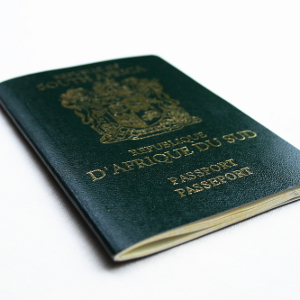Cape Town – South Africa’s tough new entry rules to prevent child trafficking came into effect on Monday 1 June, with airlines and travel agents saying the regulations could hurt the important tourism industry.
The government estimates 30 000 children are trafficked into South Africa annually, often for prostitution or labour. Opposition parties, human rights groups and tourism firms say the true figure is much lower.

The new rules from the department of home affairs require minors travelling with both parents to have an unabridged birth certificate with full details of both parents, as well as a passport and visa.
If the child is travelling with only one parent, immigration authorities require the written consent of the other parent, even when the parents are divorced.
Those travelling with a minor who is not their biological child need a legal letter from both the parents or guardians authorising the journey.
“The main aim is that we prevent child trafficking,” said Minister in Presidency Jeff Radebe..
Tourism has become South Africa’s fastest-growing sector. Arrivals have been boosted in part by a weaker rand currency that has made South Africa a relatively cheap destination.
The outbound travel, inbound tourism and airline industry associations – ASATA, SATSA and BARSA – held a media briefing on Friday to discuss the key issues around the new requirements, including how biometric visas will affect the industry.
David Frost, the chief executive of Southern Africa Tourism Services Association (SATSA), said the new rules would hurt the industry.
Airlines would bear the cost of repatriating travellers without the correct documents, he said.
“What we are seeing here is akin to taking a sledgehammer to kill a mosquito,” he told the briefing.
Otto de Vries, the head of the Association of Southern African Travel Agents, disputed the government’s figures on trafficking.
“If you are going to implement policy that is this unique in the world, you would have taken the time to find out exactly how serious the situation is,” he said.
Following are three of the many issues raised by ASATA, SATSA and BARSA, surrounding the new visa requirements:
Issue 1: Must unabridged birth certificates be translated into English?
According to the organisations this requirement is unclear because “the Standard Operating Procedures V5 issued by Home Affairs makes no mention thereof and the brochure issued by DHA one month prior to the implementation of these regulations is ambiguous and unclear, raising more questions than answers”.
Issue 2: How many children are being trafficked in South Africa?
Frost said the figure of 30 000 children being trafficked annually was produced by Roxanne Williams from Operation Mobilisation and has been confirmed as a misquoted”.
“Stats produced by SAPS on the actual number of children going missing in SA every year are not even 2% of this estimate. If the number of SA children being trafficked is so high, why has there not been an increase in the number of missing children reported to SAPS?”
“Surely, their parents would have reported it? Most trafficking occurs within South Africa, i.e. it is internal and not across borders. Porous borders into and out of SA have been noted as a means for trafficking children across borders.”
Issue 3: How prepared is the DHA to roll out new regulations?
According to the tourism bodies there are “large gaps in the Standard Operating Procedures, which are further confused by the inconsistent statements being made by DHA officials on what is required, is not required”.
They have also called into question how DHA will clear the backlog of outstanding birth certificates.
“As of 18 May 2015, the backlog of applications still within the 6 to 8 week turnaround time amounted to 5 674”.